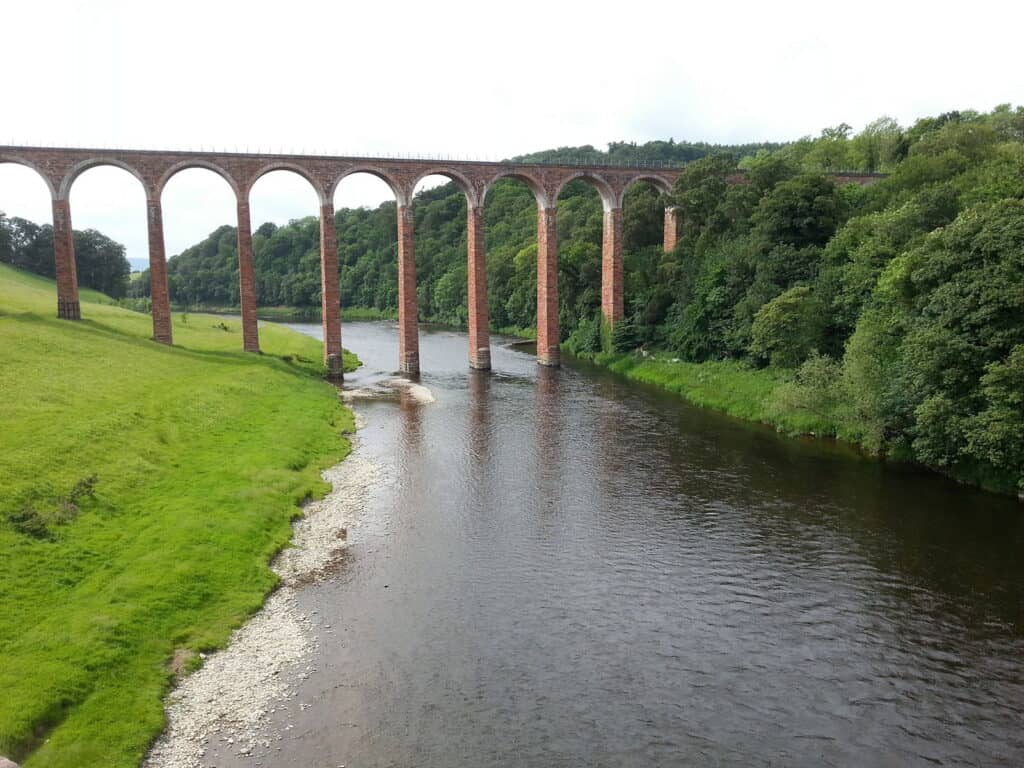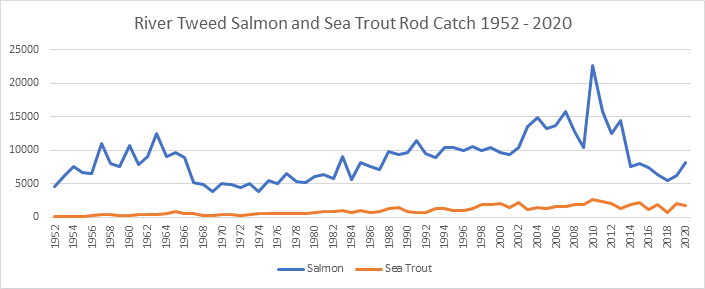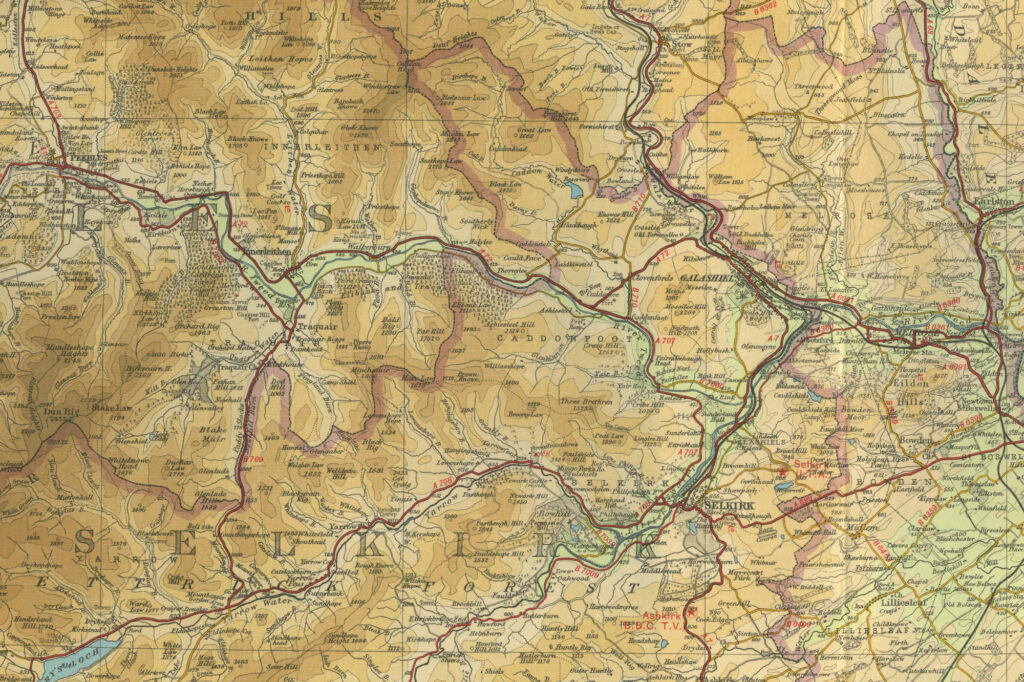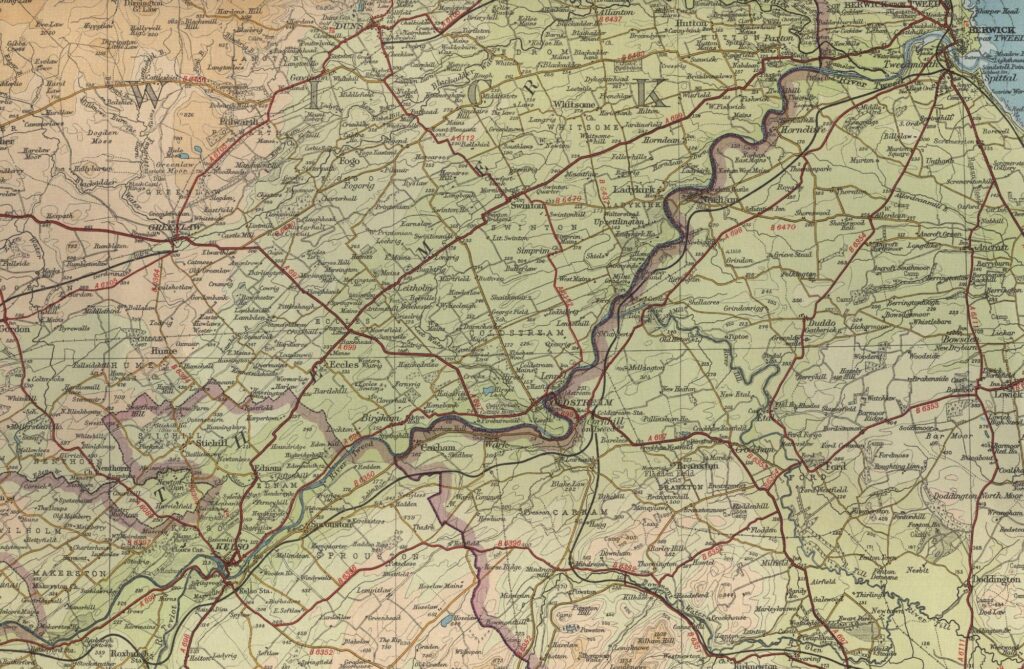Salmon Fishing on the River Tweed
The great River Tweed is born at Wells of Tweed, 1500 feet up in the hills north of Moffat and flows eastwards for 100 miles to enter the North Sea at Berwick, picking up on its way the major tributaries, Yarrow and Ettrick, Gala Water, Leader Water, Teviot, Till and Whiteadder. Best known as an autumn salmon river, the Tweed has regularly been the most productive of all Scotland’s salmon rivers, producing over 10,000 salmon per season as recently as a decade ago, plus substantial numbers of sea trout, some of the sea trout big fish caught by salmon fishers in the back end months. catches in recent seasons, however, have fallen in line with nationwide catches generally.

Fly fishing is done from both bank and boat, the latter particularly in the wide reaches of the lower river. There are 128 riparian owners on the Tweed, Some of the best and most famous beats, on the middle and lower river include Pavillion, Drygrange, Bemersyde, Dryburgh, Mertoun, Makerstoun, Floors, Junction, Hendersyde, Sprouston, Birgham, Carham, Cornhill, Twizzel and Ladykirk. Further upstream, beats include Lyne, Kailzie, Horseburgh Castle, Cadrona, Traquair, Caberston, Holylee, Thornielee, Ashiesteel, Peel and Yair. The netting stations which used to operate on lower Tweed have been bought out. Fresh salmon enter the river throughout the year right to the close of the season at the end of November. Prices on the top middle beats at the peak of the season are beyond most anglers’ reach. Some anglers, it seems, are both able and willing to pay silly money for the privilege of fishing this world famous river, with some beats fetching in the region of £4000 per rod per week. Fortunately, good fishing is nevertheless available on the river at reasonable prices. Fishing can be had on good beats in the less productive months at reduced rates, and there is some good water in the upper river, including the town water at Peebles, available to visitors. Some angling clubs and associations may be able to offer salmon permits to visiting anglers.

River Tweed Maps
Tap or click on a map below to view full size image


Note: the maps on this website are extracts from the Bartholomew “Half Inch” map series dating back to the middle of the twentieth century. There have been many changes since the maps were made, and much of the human detail, e.g. buildings and roads, will have changed over the period. It is to be hoped, however, that the unique character of our Scottish rivers, and the trout and salmon in them, will not have altered too dramatically over the years and that they may still offer the wonderful fishing prospects of days gone by. Bearing the above in mind, anyone planning a fishing or walking trip in Scotland is advised to equip themselves with a compass and the appropriate up-to-date Ordnance Survey map, the most useful for the angler probably being the Landranger series, scale 1:50,000. For The Tweed, see O.S. map numbers 72, 73, 74.
For further information about the fishing on the Tweed see River Tweed Fishing
For information about the trout fishing in the area see Trout Fishing Scotland
